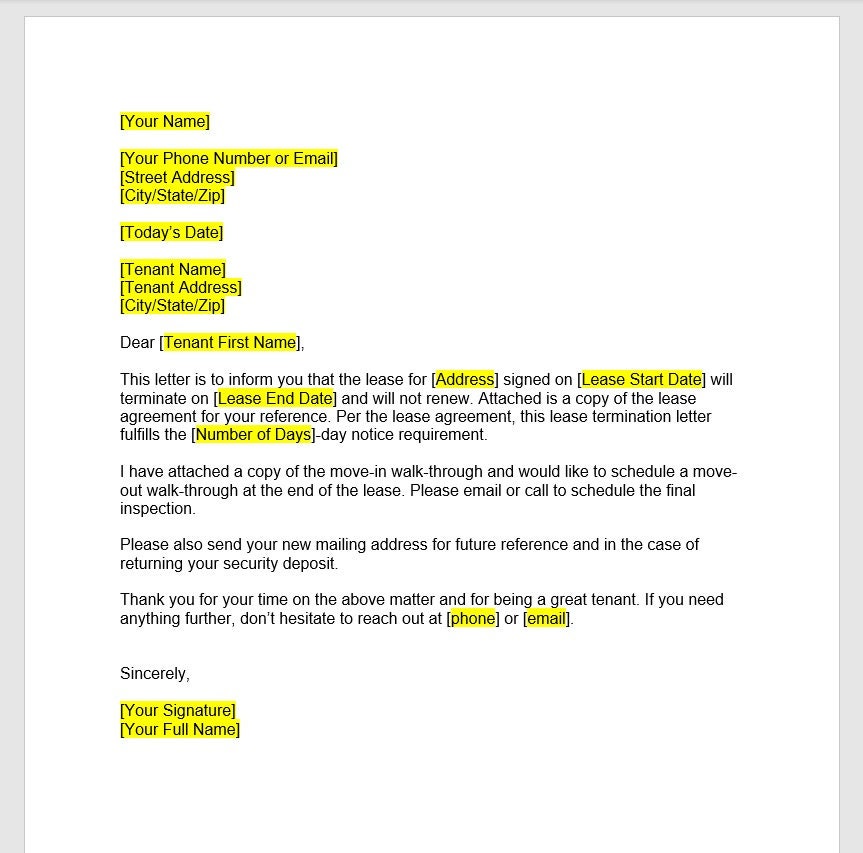
Documenting Lease Termination: A Comprehensive Guide
Terminating a lease involves more than just vacating the premises. It requires careful documentation to ensure a smooth and legally sound process. Let’s explore the essential steps and considerations for proper lease termination documentation.
Understanding Lease Agreement Terms:
Before initiating the lease termination process, thoroughly review the terms outlined in your lease agreement. Pay close attention to clauses related to termination, notice periods, and any specific requirements set forth by your landlord.
Notice of Intent to Terminate:
Once you decide to terminate your lease, the first step is providing your landlord with a formal notice of your intent to terminate. This notice should be in writing and include essential details such as the termination date and any other relevant information specified in your lease agreement.
Inclusion of Specific Termination Reasons:
Some lease agreements require tenants to provide specific reasons for termination. Whether it’s due to a job relocation, change in family circumstances, or other valid reasons, clearly articulate these reasons in your termination notice.
Confirmation of Notice Receipt:
To ensure that your landlord acknowledges and receives your termination notice, consider sending it through certified mail or another method that provides a delivery confirmation. This documentation serves as proof that your landlord received the termination notice within the specified timeframe.
Photographic Documentation of Property Condition:
Before vacating the property, document its condition through photographs or videos. This visual evidence can be crucial in case of any disputes regarding the property’s condition and can serve as a reference point for both parties.
Return of Keys and Access Devices:
Include in your documentation the return of keys, access cards, or any other devices that grant entry to the property. Clearly state the date on which you returned these items to your landlord. This step helps prevent any disputes over access to the property after termination.
Final Walkthrough and Inspection:
Coordinate a final walkthrough and inspection with your landlord. This provides an opportunity to address any potential issues or concerns regarding the property’s condition. Document the outcomes of this inspection and ensure that both parties agree on the property’s status.
Settlement of Outstanding Financial Obligations:
Ensure that all financial matters are settled before and during the termination process. This includes paying any outstanding rent, fees, or charges as specified in your lease agreement. Document the settlement of these financial obligations for your records.
Signing a Lease Termination Agreement:
In some cases, landlords may request tenants to sign a formal lease termination agreement. This document outlines the terms and conditions agreed upon by both parties for the lease termination. Ensure that you carefully review and understand the contents before signing.
Retaining Copies of All Documentation:
Finally, retain copies of all the documentation related to the lease termination process. This includes the termination notice, photographs, confirmation of notice receipt, and any signed agreements. Having a comprehensive file ensures that you can refer back to the documentation if needed in the future.
In conclusion, proper documentation is a key aspect of lease termination. By following these steps and considerations, you can ensure a thorough and legally sound process. For more insights into lease termination documentation, visit Lease termination documentation.
